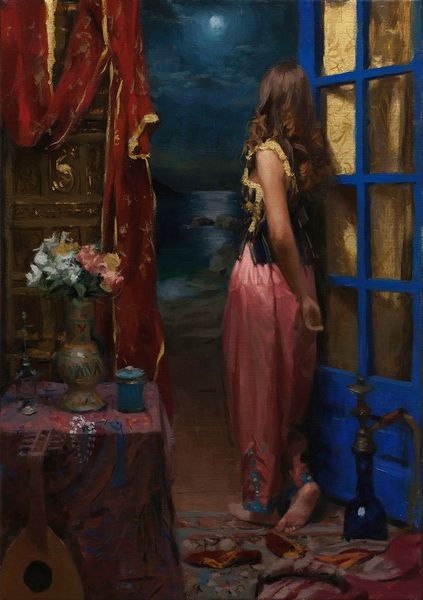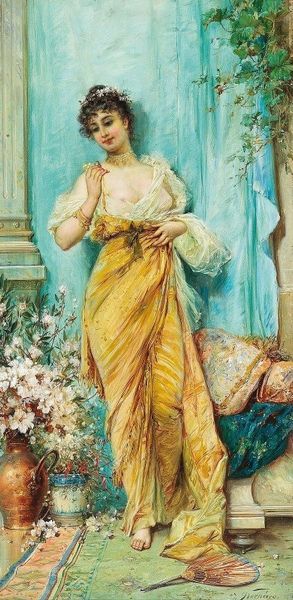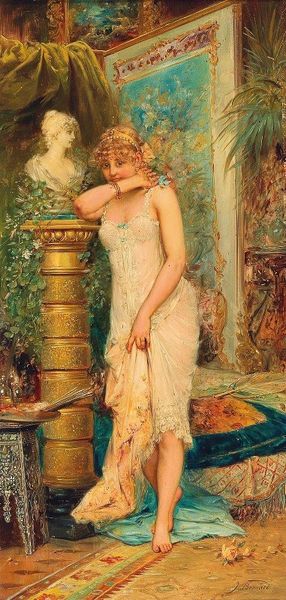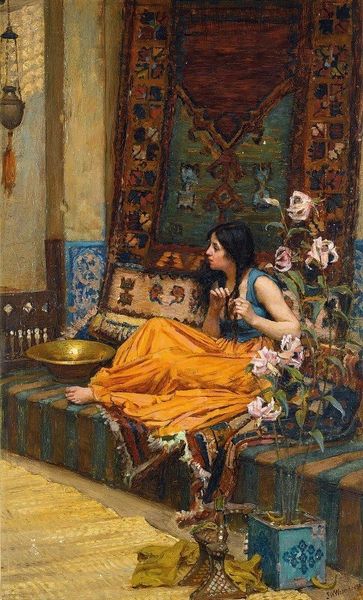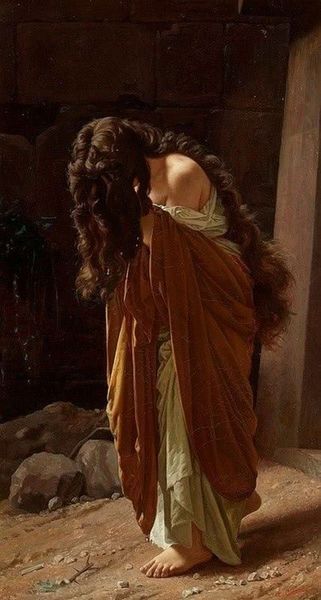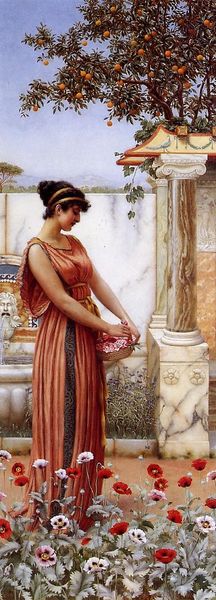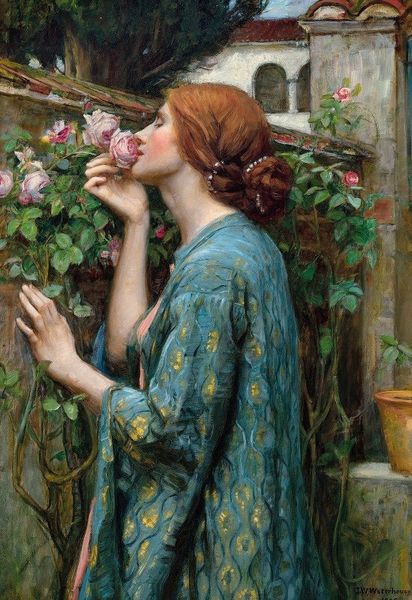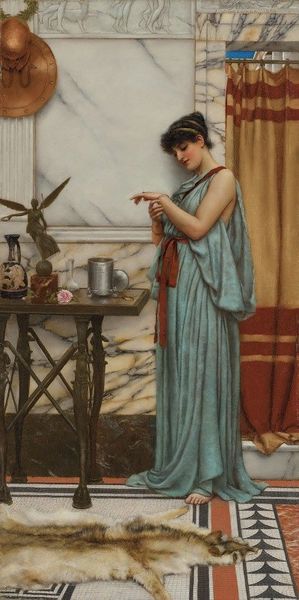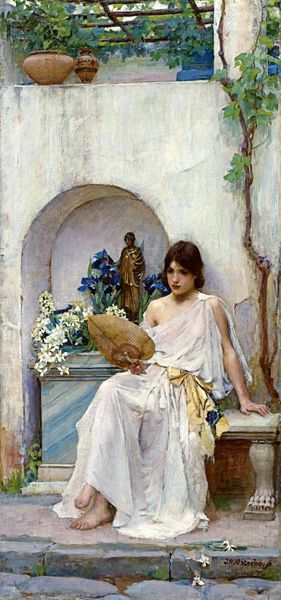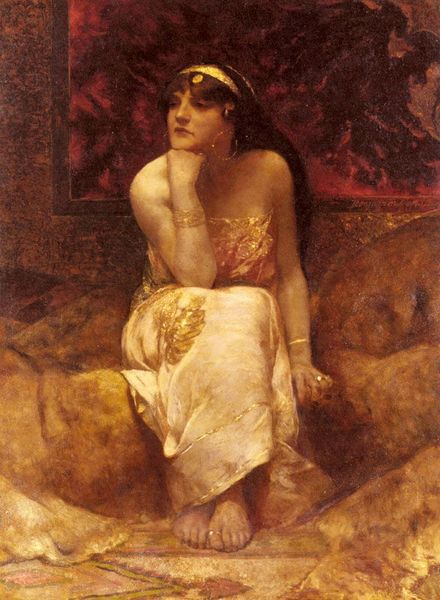
painting, oil-paint
#
portrait
#
painting
#
oil-paint
#
painted
#
figuration
#
romanticism
#
mythology
#
history-painting
#
pre-raphaelites
#
nude
Copyright: Public Domain: Artvee
Editor: We are looking at Waterhouse's painting, "Thisbe." She is listening at a wall. What's your interpretation? Curator: Waterhouse often depicted women from mythology, but within a Victorian framework. It’s interesting how he visualizes Thisbe's vulnerability here. The wall she strains against isn't just a physical barrier, is it? Consider it as a societal constraint, a gendered boundary placed upon her agency. Editor: So, you are seeing Thisbe’s actions as a form of resistance? Curator: Precisely. Her quiet act of listening challenges the passive role often assigned to women in both mythology and the Victorian era. Also, note her bare feet. In what ways could they symbolize vulnerability and a lack of status? Editor: Interesting thought! I hadn’t considered her class or agency through that detail. Curator: The setting, too, evokes a sense of imprisonment despite its beauty. The decorated tile work hints at confinement as much as luxury, no? Do you think Waterhouse is implicitly critiquing the romanticized visions of women that were so prominent during his time? Editor: Definitely. I see a tension between the aesthetic beauty and the deeper implications of her isolation. Curator: Exactly. Waterhouse offers not just a romantic painting but also, possibly, a commentary on the limited roles afforded to women, inviting us to question these restrictions even now. Editor: Thanks, I learned a lot, especially to analyze those gendered implications, not only the aesthetic aspects. Curator: I think deconstructing those frameworks allow us a deeper understanding of art history, not just the beauty itself.
Comments
No comments
Be the first to comment and join the conversation on the ultimate creative platform.
